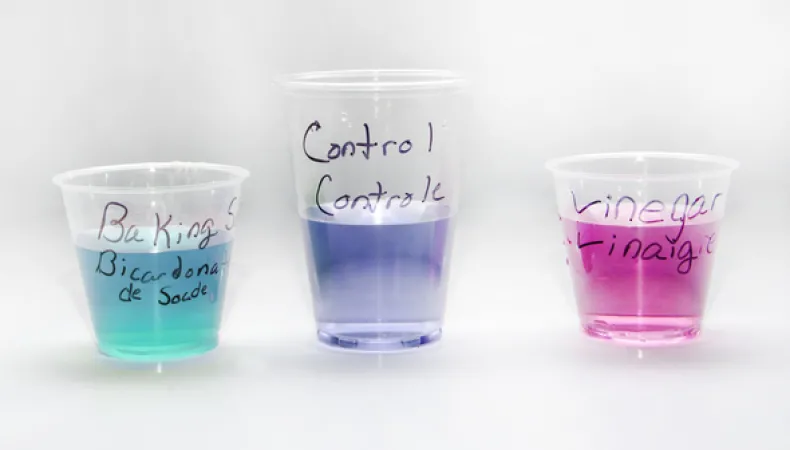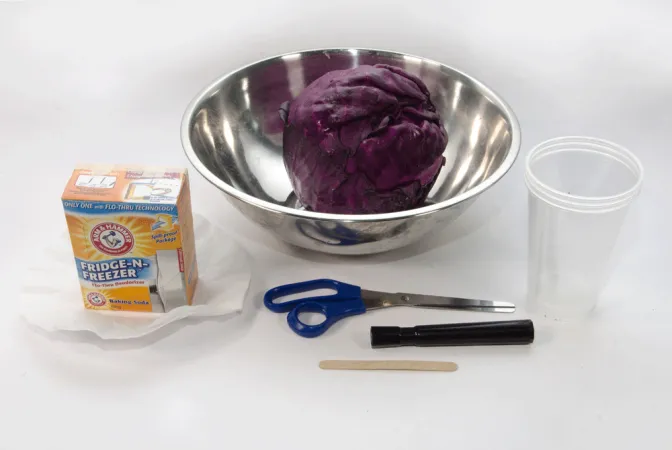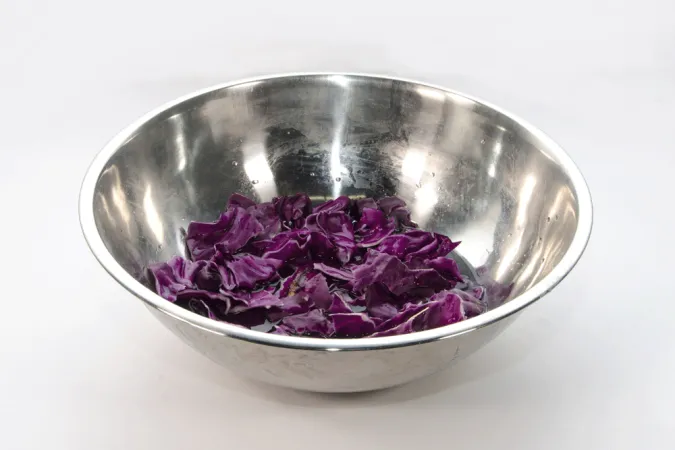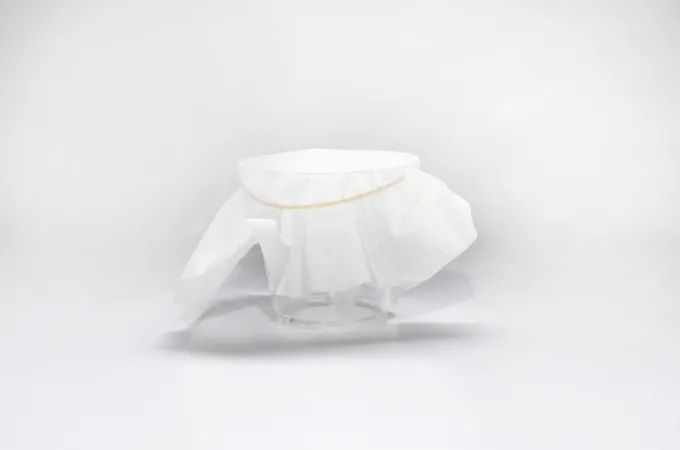
In this experiment, explore the acidity of different household items by making a universal indicator with red cabbage.
What you need
- Red cabbage (approximately 0.5 kg)
- Ceramic or glass bowl (or anything that can have boiling water in it)
- Boiling water (approximately 1 L)
- Stir stick or spoon
- Coffee filters
- Clear plastic cups or glass jars (one for each test solution and one for a control)
- Scissors
- Marker
- Optional test solutions: baking soda, dissolved antacid tablets, dish soap, vinegar, lemon juice, orange juice, tap water
- Colour print-out or e-version of the pH colour scale (below)
Safety first!
Never eat or drink any of the test solutions. Adult supervision may be needed when handling boiling water or scissors.
Make it
- Cut the cabbage into small pieces and put it in your bowl.
- Cover the cabbage with the boiling water and leave it to sit for 10 minutes. Get help from an adult if you need it.
- After 10 minutes has passed, pour a small amount of the cabbage broth into each of the cups, passing it through the coffee filter first. You want to make sure that you have only the broth in your cups – not the cabbage leaves. Fill the cups about halfway.
- Label one “control” cup. This one will not have anything added to it.
- Label the other cups with whichever other substances you’re testing.
Test it
Slowly begin adding each test solution to the cups until you observe a colour change. It may help to use a stir stick or spoon and slowly stir as the new substance is being added.
Explain it
Chemicals can be grouped into two broad classes – acids and bases. In solution, acids release a higher concentration of hydrogen ions (H+), and bases release a higher concentration of hydroxide ions (OH-). The relative acidity of different chemicals is mapped on a scale called the pH (potential of hydrogen) scale. On the pH scale, which for most chemicals runs from 1 (most acidic) to 14 (most basic), a score of 7 indicates that the solution is neutral – neither acidic nor basic.
Red cabbage contains anthocyanin, which is a type of flavonoid molecule. As is the case here, flavonoids are usually very pigmented. The interesting property of anthocyanins is that the colour of the compound is highly dependent on the pH of the solution. All of the household solutions that you tested today fall at different points on the pH scale – the baking soda, dish soap, and antacids are basic, the water is neutral, and the vinegar, lemon, and orange juices are acidic. Try using the key below to see what the pH of your mixes are!
Observe it
If you tested an antacid with your red cabbage solution, you will have noticed that it is basic. In fact, the name tells you that on its own – it’s the opposite of acid! The reason that they work to fight stomach pains is because they neutralize the naturally-occurring acid (which can cause pains) in your stomach by raising the pH.
Go further
Pick two of your cups – one acid, one base (but not baking soda) – and slowly begin adding them together. Can you neutralize the mixture? You’ll know if you have because it will be the same colour as your neutral water mixture.
Now, try mixing the baking soda mix and an acid mix together. What happens? You’ll notice that the solution begins to bubble. In addition to neutralization, a separate reaction takes place – releasing carbon dioxide (CO2) gas, which makes the bubbles. Although all of the compounds used are safe to mix, this is something that is always important to keep in mind while doing chemistry. Always make sure you know if any dangerous side reactions could occur before mixing any chemicals together!
Program Details
- View all programs at the Canada Science and Technology Museum
- View other programs related to Food, Sciences



